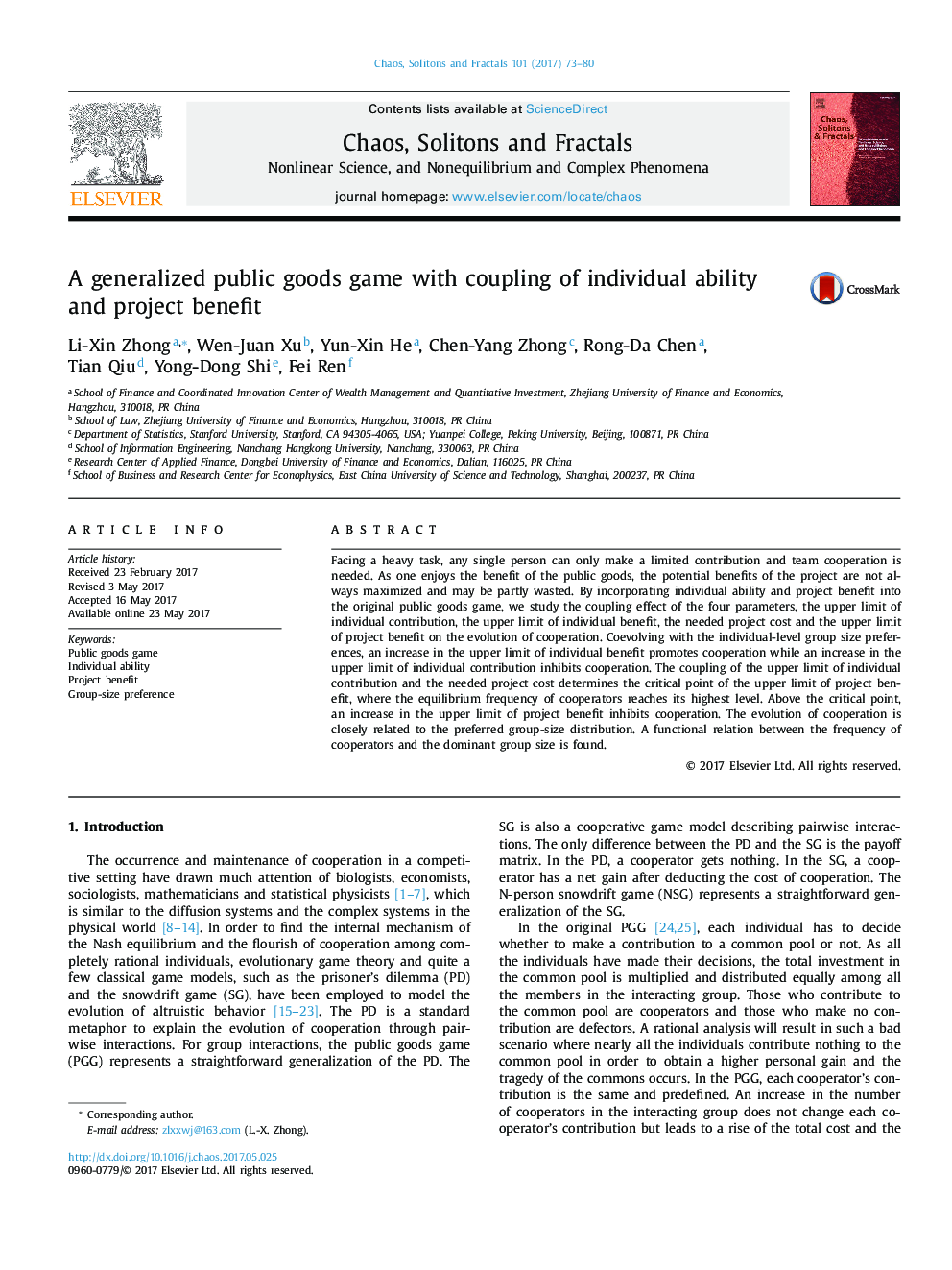| Article ID | Journal | Published Year | Pages | File Type |
|---|---|---|---|---|
| 5499773 | Chaos, Solitons & Fractals | 2017 | 8 Pages |
Abstract
Facing a heavy task, any single person can only make a limited contribution and team cooperation is needed. As one enjoys the benefit of the public goods, the potential benefits of the project are not always maximized and may be partly wasted. By incorporating individual ability and project benefit into the original public goods game, we study the coupling effect of the four parameters, the upper limit of individual contribution, the upper limit of individual benefit, the needed project cost and the upper limit of project benefit on the evolution of cooperation. Coevolving with the individual-level group size preferences, an increase in the upper limit of individual benefit promotes cooperation while an increase in the upper limit of individual contribution inhibits cooperation. The coupling of the upper limit of individual contribution and the needed project cost determines the critical point of the upper limit of project benefit, where the equilibrium frequency of cooperators reaches its highest level. Above the critical point, an increase in the upper limit of project benefit inhibits cooperation. The evolution of cooperation is closely related to the preferred group-size distribution. A functional relation between the frequency of cooperators and the dominant group size is found.
Keywords
Related Topics
Physical Sciences and Engineering
Physics and Astronomy
Statistical and Nonlinear Physics
Authors
Li-Xin Zhong, Wen-Juan Xu, Yun-Xin He, Chen-Yang Zhong, Rong-Da Chen, Tian Qiu, Yong-Dong Shi, Fei Ren,
